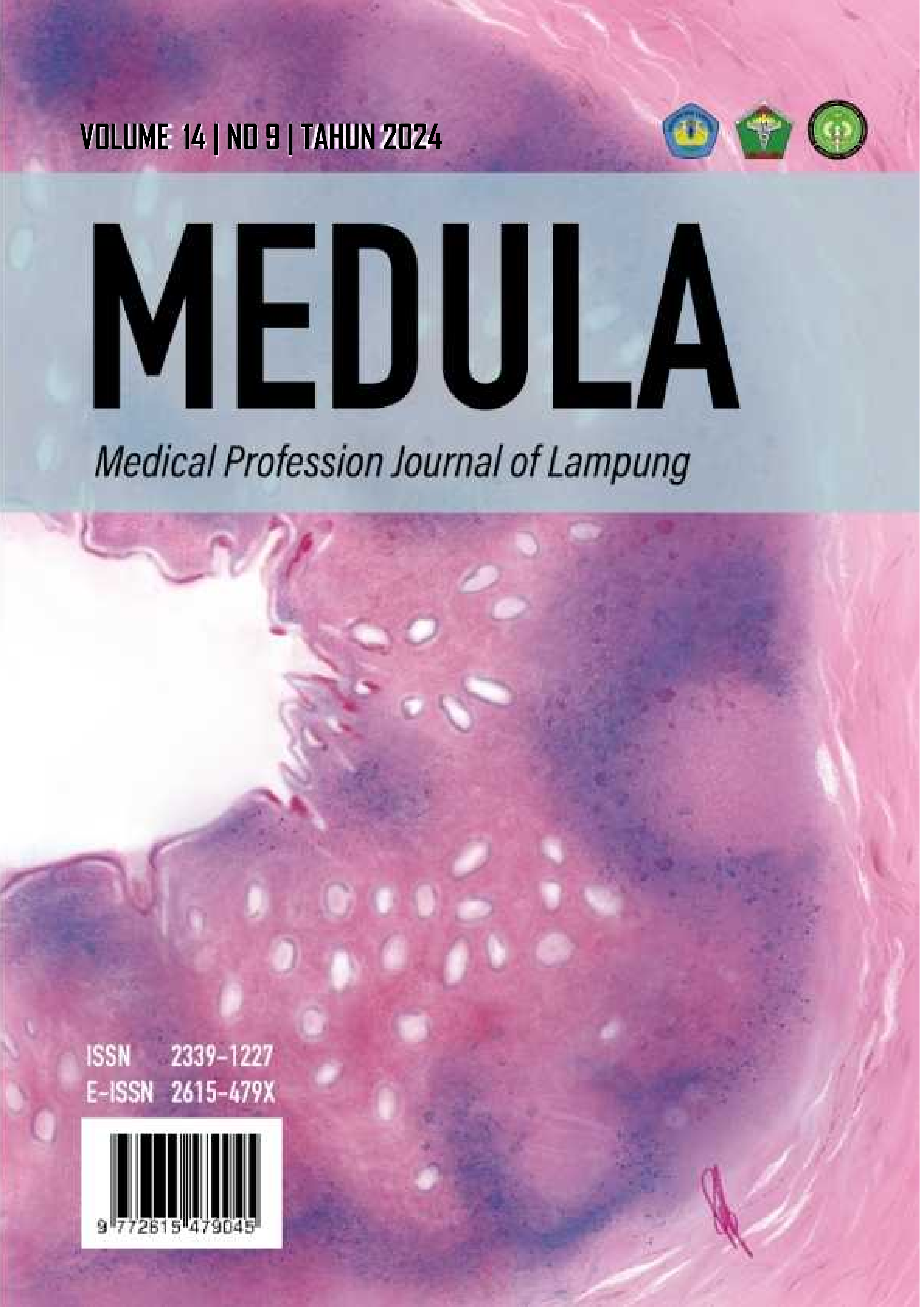Non-Pharmacological Therapies for Insomnia: A Literature Review
DOI:
https://doi.org/10.53089/medula.v14i9.1262Keywords:
Insomnia, therapy, non-pharmacology, insomnia, therapy, non-pharmacologyAbstract
Insomnia is a condition characterized by difficulty initiating sleep despite having adequate time and opportunity. Globally, the majority of insomnia sufferers are women, with approximately 10% of the world’s population estimated to experience severe insomnia. The management of insomnia typically begins with the principles of Consultation, Information, and Education (CIE). In cases of severe insomnia, further intervention often involves pharmacological therapy through medication. The primary class of drugs prescribed for insomnia patients generally belongs to the benzodiazepine group, which acts as a central nervous system depressant, muscle relaxant, and sedative. However, pharmacological treatment should always be complemented with non-pharmacological therapy. Notably, non-pharmacological interventions serve as the first-line treatment for patients with mild to moderate insomnia. This review article aims to evaluate the effectiveness of various non-pharmacological therapies for managing insomnia, which is recognized as the most prevalent sleep disorder worldwide. The literature review was conducted by searching databases such as PubMed, Google Scholar, and ScienceDirect using the keywords “Insomnia,” “Therapy,” and “Non-Pharmacological.” Based on the search results, seven relevant articles were selected for review. The findings from these studies indicate that effective non-pharmacological interventions for insomnia management include Cognitive Behavioral Therapy for Insomnia (CBT-I), hypnotherapy, audiovisual stimulation, aerobic and endurance exercises, acupuncture, and Pre-Sleep Dim Light Therapy (LT).
References
Del Barrio V. Diagnostic and statistical manual of mental disorders. 2004. doi:10.1016/B0-12-657410-3/00457-8.
Fredrickson PA, Richardson JW, Esther MS, et al. Sleep disorders in psychiatric practice. Mayo Clin Proc. 1990;65(6):861-868. doi:10.1016/S0025-6196(12)62577-4.
Holder S, Narula NS. Common sleep disorders in adults: diagnosis and management. Am Fam Physician. 2022;105(4):397-405.
Eliza NAA, Amalia N. Pengetahuan insomnia pada remaja selama COVID-19. Borneo Student Res. 2022;3(2):1941-1946.
Edison H, Nainggolan O. Hubungan insomnia dengan hipertensi. Bul Penelit Sist Kesehat. 2021;24(1):46-56. doi:10.22435/Hsr.V24i1.3579.
Sutardi MAG. Tata laksana insomnia. J Med Hutama. 2021;03(01):1703-1708.
Sherwood L. Introduction to human physiology. 9th ed. Jakarta: EGC; 2021.
Sholehah LR. Penanganan insomnia. E-Jurnal Univ Udayana. 2013:1-21.
Manber R, Bei B, Simpson N, et al. Cognitive behavioral therapy for prenatal insomnia: a randomized controlled trial. Obstet Gynecol. 2019;133(5):911-919. doi:10.1097/AOG.0000000000003216.
Dzierzewski JM, Martin JL, Fung CH, et al. Sleep and wake perceptions: results from a [incomplete title]. 2020;28(4):1-15. doi:10.1111/jsr.12809.CBT.
Garland SN, Xie SX, Duhamel K, et al. Acupuncture versus cognitive behavioral therapy for insomnia in cancer survivors: a randomized clinical trial. J Natl Cancer Inst. 2019;111(12):1323-1331. doi:10.1093/jnci/djz050.
Gloria Kang GJ, Ewing-Nelson SR, Mackey L, Schlitt JT, Marathe A, Abbas KM. Open loop audio visual stimulation for sleep promotion in older adults with comorbid insomnia and osteoarthritis pain: results of a pilot randomized controlled trial. Physiol Behav. 2018;176(1):139-148. doi:10.1016/j.sleep.2021.03.025.
Otte JL, Carpenter JS, Roberts L, et al. Self-hypnosis for sleep disturbances in menopausal women. J Womens Health. 2020;29(3):461-463. doi:10.1089/jwh.2020.8327.
Al-Jiffri OH, Abd El-Kader SM. Aerobic versus resistance exercises on systemic inflammation and sleep parameters in obese subjects with chronic insomnia syndrome. Afr Health Sci. 2021;21(3):1214-1222. doi:10.4314/ahs.v21i3.30.
Sukohar A, Iqbal M, Triyandi R, et al. Melinjo seeds (Gnetum gnemon L.) antioxidant activity and cytotoxic effects on MCF-7 breast cancer cells: a study based on tracing of resveratrol compound. J Pharm Bioallied Sci. 2024;16(1):16-23. doi:10.4103/jpbs.Jpbs_878_23.
Yoon J, Heo SJ, Lee H, et al. Assessing the feasibility and efficacy of pre-sleep dim light therapy for adults with insomnia: a pilot study. Medicina. 2024;60(4):1-15. doi:10.3390/medicina60040632.
Downloads
Published
How to Cite
Issue
Section
License
Copyright (c) 2025 Medical Profession Journal of Lampung

This work is licensed under a Creative Commons Attribution-ShareAlike 4.0 International License.














